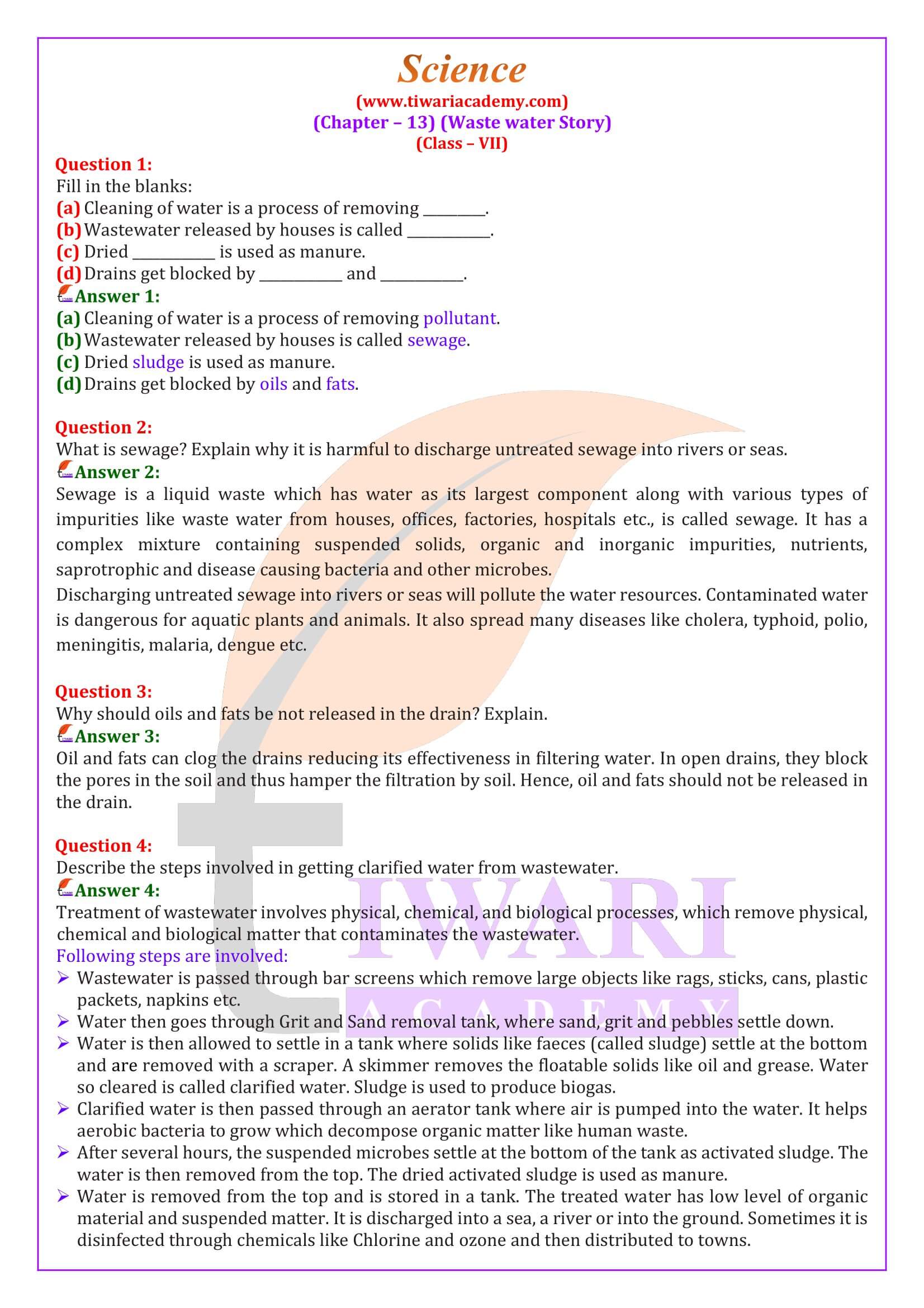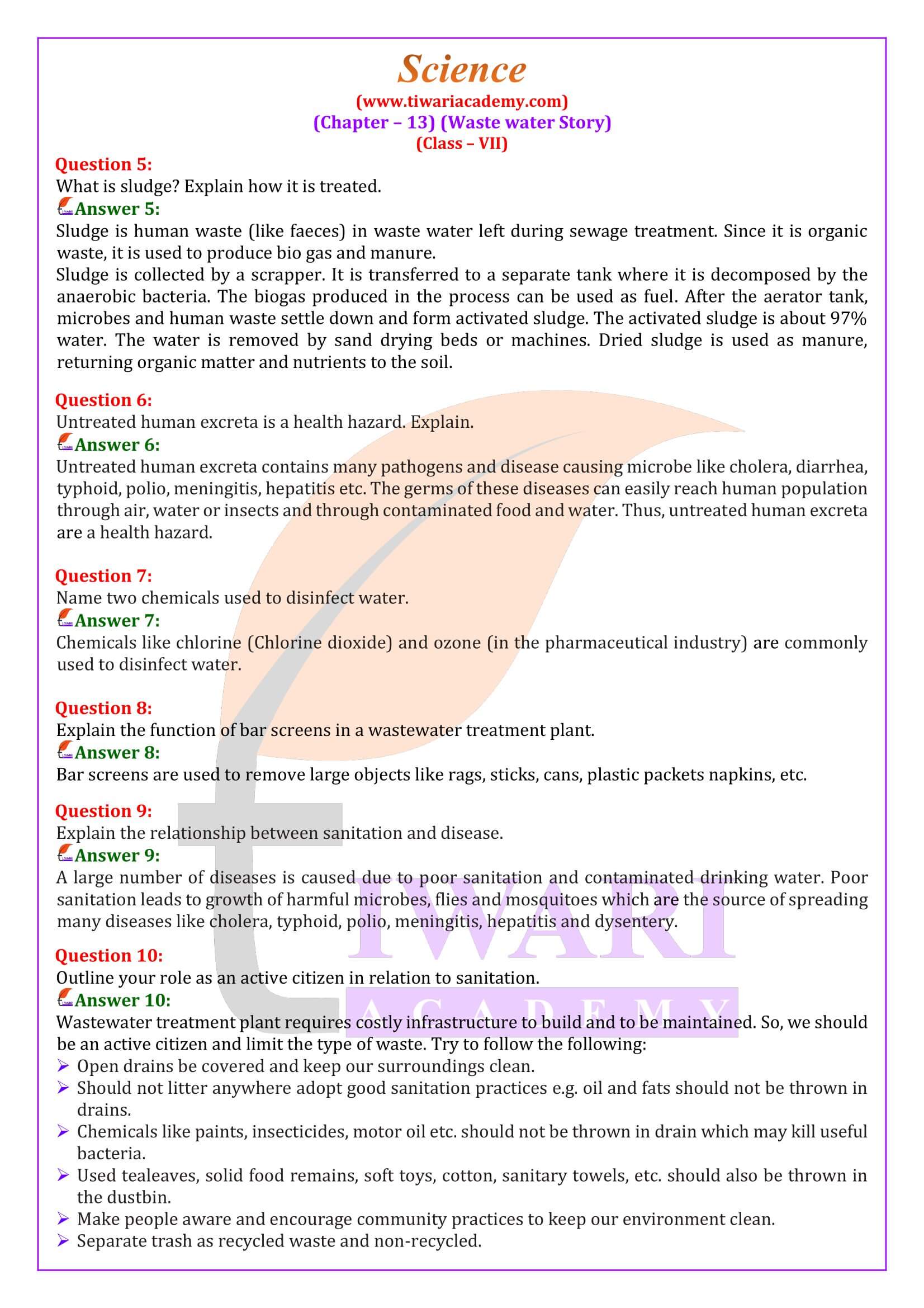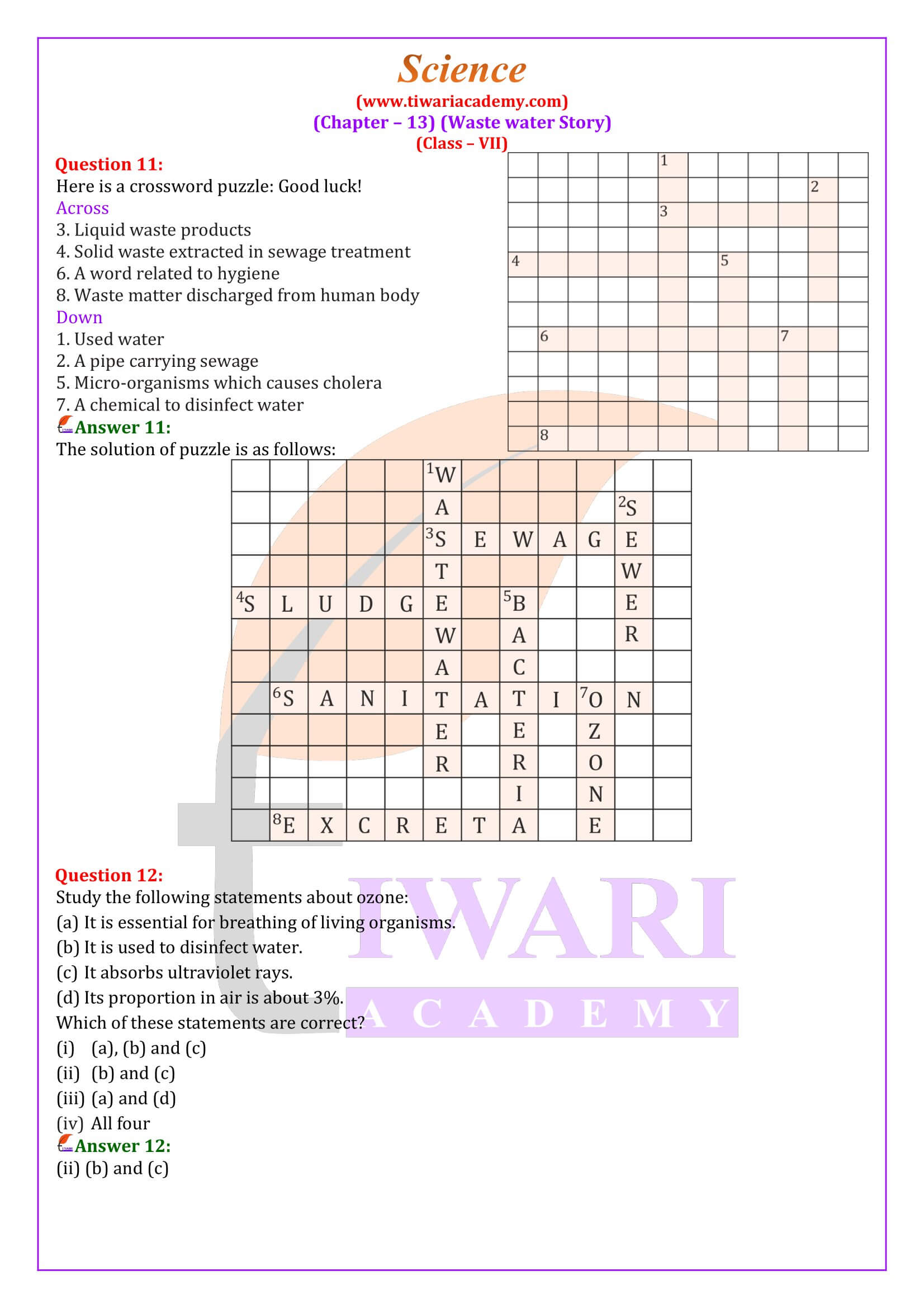Question Wise Class 7 Science Chapter 13 Solutions
Class 7 Science Chapter 13 NCERT Answers
Class 7 Science Chapter 13 in Hindi Medium
Class 7 Science Chapter 13 Extra Questions
Class 7 Science Chapter 13 MCQ
Class 7 Science NCERT Book Download
NCERT Solutions for Class 7 Science
NCERT Solutions for Class 7 all Subjects
NCERT Solutions for Class 7 Science Chapter 13 Wastewater Story in English Medium or Hindi Medium free to download or View online updated for new academic session 2025-26. The video explanation and question answers of chapter 13 class 7 Science are revised as per the NCERT books issued for 2025-26 examination.
| Class: 7 | Science |
| Chapter 13: | Wastewater Story |
| Content: | Solutions, MCQ and Extra Question Answers |
| Curriculum: | 2025-26 |
| Medium: | Hindi and English Medium |
Class 7 Science Chapter 13 NCERT Solutions
Class 7 Science Chapter 13 Answers
CBSE NCERT Solutions for Class 7 Science Chapter 13 Wastewater Story in Hindi and English Medium updated for session 2025-26.
Important Questions on 7th Science Chapter 13 for Practice
1. Which of the following is waste water?
(a) Water trickling from a damaged tap.
(b) Water coming out of a shower.
(c) Water flowing in a river.
(d) Water coming out of a laundry.
2. Which of the following is not a source of waste water?
(a) Sewers
(b) Homes
(c) Industries
(d) Hospitals
3. Sewage is mainly a
(a) liquid waste.
(b) solid waste.
(c) gaseous waste.
(d) mixture of solid and gas.
4. Which of the following is a part of inorganic impurities of the sewage?
(a) Pesticides
(b) Urea
(c) Phosphates
(d) Vegetable waste
5. Which of the following is/are products of wastewater treatment?
(a) Biogas
(b) Sludge
(c) Both biogas and sludge
(d) Aerator
6. The system of a network of pipes used for taking away wastewater from homes or public buildings to the treatment plant is known as
(a) sewers.
(b) sewerage.
(c) transport system.
(d) treatment plant.
7. Open drain system is a breeding place for which of the following.
(a) Flies
(b) Mosquitoes
(c) Organisms which cause diseases
(d) All of these
8. Pick from the following one chemical used to disinfect water.
(a) Chlorine
(b) Washing soda
(c) Silica
(d) Coal
9. In a filtration plant water is filtered using layers of
(a) sand and clay.
(b) clay and fine gravel.
(c) sand and fine gravel.
(d) sand, fine gravel and medium gravel.
10. Water polluted by various human activities causes a number of water borne diseases. Which of the following is not a water borne disease?
(a) Cholera
(b) Typhoid
(c) Asthma
(d) Dysentry
Answers of 7th Science Chapter 13 Important Questions (MCQ)
1 (d)
2 (a)
3 (a)
4 (c)
5 (c)
6 (b)
7 (d)
8 (a)
9 (d)
10 (c).
Important NCERT Questions Class 7 Science Chapter 13
Why should oils and fats be not released in the drain? Explain.
Oil and fats can clog the drains reducing its effectiveness in filtering water. In open drains, they block the pores in the soil and thus hamper the filtration by soil. Hence, oil and fats should not be released in the drain.
Fill in the blank: Cleaning of water is a process of removing _________.
Cleaning of water is a process of removing pollutant.
Describe the steps involved in getting clarified water from wastewater.
Treatment of wastewater involves physical, chemical, and biological processes, which remove physical, chemical and biological matter that contaminates the wastewater. Following steps are involved: Wastewater is passed through bar screens which remove large objects like rags, sticks, cans, plastic packets, napkins etc. Water then goes through Grit and Sand removal tank, where sand, grit and pebbles settle down. Water is then allowed to settle in a tank where solids like faeces (called sludge) settle at the bottom and are removed with a scraper. A skimmer removes the floatable solids like oil and grease. Water so cleared is called clarified water. Sludge is used to produce biogas. Clarified water is then passed through an aerator tank where air is pumped into the water. It helps aerobic bacteria to grow which decompose organic matter like human waste. After several hours, the suspended microbes settle at the bottom of the tank as activated sludge. The water is then removed from the top. The dried activated sludge is used as manure. Water is removed from the top and is stored in a tank. The treated water has low level of organic material and suspended matter. It is discharged into a sea, a river or into the ground. Sometimes it is disinfected through chemicals like Chlorine and ozone and then distributed to towns.
Name two chemicals used to disinfect water.
Chemicals like chlorine (Chlorine dioxide) and ozone (in the pharmaceutical industry) are commonly used to disinfect water.
Explain the function of bar screens in a wastewater treatment plant.
Bar screens are used to remove large objects like rags, sticks, cans, plastic packets napkins, etc.




